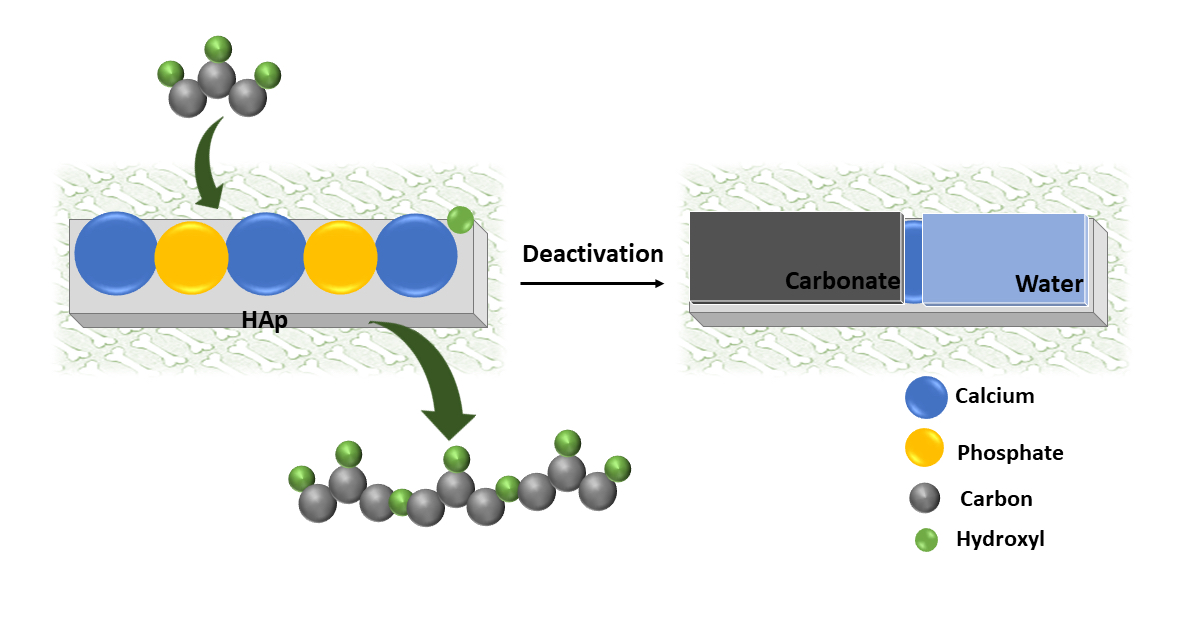Abstract: Calcium-based catalysts are of a high interest for glycerol polymerization due to their high catalytic activity and large availability. However, their poor stability under reaction conditions is an issue. In the present study, we investigated the stability and catalytic activity of Ca-hydroxyapatites (HAps) as one of the most abundant Ca-source in nature. A stochiometric, a Ca-deficient and a Ca-rich HAps have been synthetized and tested as catalysts in the glycerol polymerization reaction. Deficient and stochiometric HAps exhibited a remarkable 100% selectivity to triglycerol at 15 % of glycerol conversion at 245 °C after 8 h of reaction in the presence 0.5 mol.% of catalyst. Moreover, under the same reaction conditions, Ca-rich HAp showed a high selectivity (88 %) to di- and triglycerol at a glycerol conversion of 27 %. Most importantly, these catalysts were unexpectedly stable towards leaching under the reaction conditions based on the ICP-OES results. However, based on the catalytic tests and characterization analysis performed by XRD, XPS, IR, TGA-DSC and ICP-OES, we found that HAps can be deactivated by the presence of the reaction products themselves, i.e., water and polymers.

